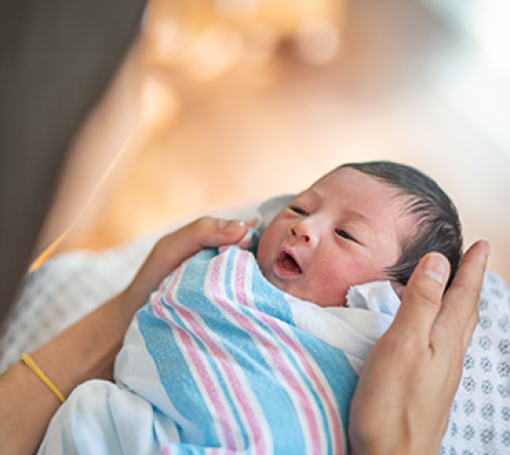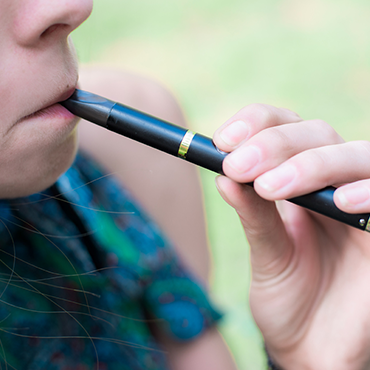
“E-cigarette use poses a significant – and avoidable – health risk to young people in the United States.” - Surgeon General of the United States
Q: What are e-cigarettes and why are they so popular with young people?
A: E-cigarettes (also referred to as “e-cigs,” “e-hookahs,” “mods,” “vape pens,” “vapes,” “tank systems,” and electronic nicotine delivery systems) are battery-operated devices used to heat and aerosolize a liquid in order to deliver nicotine, flavorings, and other chemicals that users inhale.
Here are some reasons that youth may use e-cigarettes:
- They are curious
- They like the flavors they come in
- They think they are safe
- They seek the stimulant quality of nicotine
- They want to perform tricks with the exhaled vapor
- They want to push limits set by adults
- Their friends are using
- Exposure to e-cigarette marketing
Q: What harm is caused when young people use e-cigarettes?
A: There are many reasons why we feel it is unsafe to use e-cigarettes:
Nicotine impacts the teenage brain:
- Since the adolescent brain is still growing, it can get addicted more easily than the adult brain. Nicotine products also prime the teenage brain for addiction to other drugs such as cocaine and methamphetamine. Many, but not all, e-cigarettes contain nicotine. Some e-cigarette labels do not disclose that they contain nicotine, and some e-cigarettes marketed as containing zero percent nicotine have been found to contain nicotine.
- Nicotine can also impact a teenager’s concentration, memory, impulse control, and mood.
Other chemicals and risks:
- E-cigarettes contain other chemicals that are harmful. They contain particles, chemicals, heavy metals, and even compounds found in car exhaust that can harm lungs and put kids at risk for reactive airway disease and asthma. Flavorants, such as diacetyl, can cause a serious lung disease, called “popcorn lung” (bronchiolitis obliterans).
- Some chemicals in e-liquids and in the aerosol from e-cigarettes are known to cause cancer in humans.
- Some e-cigarette batteries have been known to cause fires and explosions.
Exposing others:
- When teens use e-cigarettes or other tobacco products around young people, they are setting an unhealthy example.
- The second-hand aerosol is not “harmless water vapor.” It places others at risk of exposure to nicotine and other chemicals that can be harmful to their health.
- The liquid for e-cigarettes can contain high enough levels of nicotine to cause nicotine poisoning if it’s ingested or absorbed through the skin. It’s especially dangerous for young children, who may be attracted to the liquid because of the flavors and bright colors.
Links to other products:
- Youth who use e-cigarettes are more likely to try conventional cigarettes in the future.
- Some teens use e-cigarettes with other drugs such as marijuana.
Q: How should parents talk to their kids about e-cigarettes?
A: Parents and caregivers may not realize their ability to influence their child’s decision to use or not use e-cigarettes. Fortunately, peers and the internet are only a supplement, not a replacement, for parents, teachers, and doctors as sources of credible health information for teenagers.
First, we want parents to model the behavior we want to see in our children. We want homes to be tobacco free. And if you are a caregiver that uses tobacco, it is never too late to quit. And even if you have used tobacco yourself, your children will listen if you discuss your struggles with nicotine addiction.
Next, we want parents to be open, patient, and non-judgmental.
Be prepared with facts, such as those listed above, to be able to answer your child’s questions.
Now, start a conversation (not a lecture), and be ready to listen. We want to encourage an open dialogue. That conversation could even start with sharing this blog with your child and then asking them what they think after reading it. Or if you see an advertisement, e-cigarette shop, or someone using an e-cigarette, use that exposure as an opportunity to simply ask, “Do you know any kids that vape or use e-cigarettes?” or “What are your thoughts about e-cigarettes?“ Make sure you express your appreciation of their honesty and willingness to share. We want to reinforce communication and connection. Also reinforce the concept that you are having this conversation because your child’s health and safety are very important to you.
Lastly, be clear that you don't approve of them smoking or using e-cigarettes now or in the future. Remind them that “vaping” is a choice, a choice that can lead to harmful consequences. And if your teen is using e-cigarettes and needs support in quitting, consider using one of the resources listed on our Substance Abuse Resources handout. These resources provide information that guides young people through the steps to quit and provides you with more information on vaping and how you can help.
Parents, health care providers, teachers, and others all have roles in caring for, mentoring, and teaching our youth about their health and safety. Let’s fulfill that responsibility by staying informed, setting good examples, and continuing to have these important conversations.
Dr. Tiffany Spanier is a pediatrician in the Allegro Pediatrics Factoria location.
Keep Reading
View All Posts
Helping Kids Breathe Easier
By checking asthma control at every well care visit, we can identify changes early and make sure each child has the support they need to breathe comfortably and stay active.

Protecting Your Newborn from Hepatitis B
Learn why the birth dose of the hepatitis B vaccine matters for every baby.

Choking Prevention and First Aid
Learn how to recognize choking risks, prevent accidents, and respond effectively with first aid to keep infants and children safe.

